Our Perspective

Using powerful resumés to get in the door
I am constantly astounded at how much the job hunt process has changed over the years. Interview techniques, position expectations, educational and certification requirements have all shifted dramatically. And none has changed more drastically than the résumé, your chief selling document.
A self-promotion document and a marketing piece, your résumé is about you – your skills, your experience, your education, your description of how you can help the organization and the value you can bring. A good résumé predicts how you might perform in that desired job.
Your résumé represents a powerful document that demonstrates your communication and organizational skills. Can you take an objective look at your competencies, accomplishments and experience and put this into a document that is crisp, well-formatted and with all the tenses matching? It is the time to speak to the world, to be bold, to step up to the plate, to get in the door for an interview. A door that opens literally seconds before it opens wider or slams shut.
Format
Not too many years ago, by simply listing in chronological order the places you worked, basic responsibilities, academic achievements and perhaps your hobbies or interests, you would generally get a first reading by the human resource department or the recruiter. No more! You are now in a highly competitive market where your résumé has to outperform and outsell the competition.
Résumés have morphed from either the chronological or functional résumé into a combination that lists relevant skills and accomplishments first, and then follows with the employment history, education, etc. This format lets the reviewer see immediately what the candidate has to offer that most closely matches the advertised need of the organization. And it embodies the following important basic principles.
Getting in touch
Put your name right at the top, with your complete mailing address, telephone number and e-mail. Make it easy to find you.
Personal profile statement
Next, include a short profile or snapshot of how your experience can benefit the organization. There has been some debate on using this area to write a career objective. Personally, when I read most objectives, I say “So what?” Really, the focus should be less on what you want and more on what can you do for the employer. Here’s an example.
Dynamic and highly regarded executive director with 20+ years experience in nonprofit healthcare. Innovative and divergent thinker with track record for revitalizing organizations and implementing cutting-edge strategies to improve operations, visibility, fundraising and long-term sustainability.
Exceptional speaker and relationship builder with the ability to create excitement around a cause and to represent the organization to local and national media as a passionate and articulate spokesperson. Reputation for enlisting and leading executive and professional level volunteers to donate expertise and create forward-thinking concepts.
Relevant skills and accomplishments/ performance milestones
Your strengths come next, by key skill area, i.e.: strategic management, partnership building, board governance, media relations, innovative fundraising strategies or staff and volunteer management. Expand on your best skills, use dynamic examples and pay particular attention to those the employer is seeking.
Like all marketing documents, your résumé must be worded to respond to the particular position advertised. What the organization wants is to see how your past experience, success and achievements relate to the position. For example, for an executive director position, have you supervised 10 people or two people, worked closely with a board of directors or just assisted? Do you have experience in building budgets or was this the accountant’s job? Have you asked for major gifts of $1 million or those of $25,000? Have you led a strategic planning process or just assisted? Seek out key words used in the advertisement and repeat or respond to these particular areas.
Fundraisers should highlight their career progress by indicating growth in programs by absolute numbers or percent growth over the years. This can be done in a table format to draw the reviewer’s eye quickly to this pertinent information; for example:
Areas of Expertise
- strategic planning and vision
- campaign management
- donor development and stewardship
- financial oversight/cost control
Performance Milestones
Strategic leadership
• Successfully turned around a national healthcare organization in the face of critical operational challenges; transformed the organization both strategically and administratively; revitalized core program and delivery details; turned a struggling organization into a pioneering multi-service organization
Fundraising and development
• Doubled fundraising and sponsorship revenues in less than three years
• Recently secured a $250,000 grant from the Wild Rose Foundation
Seek the advice of a colleague who is analytical; this individual may identify attributes that you don’t necessarily see in yourself.
Thinking of exaggerating or lying about your accomplishments? You will eventually be found out. I am suspicious of a candidate who writes that during his six-month stay at an organization, he managed to raise $15 million. If this is true, I want to clone him.
Employment history
Include each organization that you have worked for in chronological order. For smaller, less well-known organizations, include a brief description to help orient the reader. Many professionals have worked in one organization for a long period. In this situation, list all of your positions within the employment period to demonstrate increased responsibility and a variety of work experiences. Don’t go beyond 15-20 years of work history. For this, you may want to include a paragraph headed “prior relevant experience” and refer to any additional important jobs without mentioning dates.
If you have had a number of contract positions, or short assignments, combine several similar jobs and emphasize in the accomplishments section what you achieved; for example:
Canadian Diabetes Association 1999-2002
• Director of major gifts
• Manager of community development
Casey House Foundation 1997-1999
Hospice for AIDS Patients
• Manager of major and planned gifts
Professional and volunteer contributions
There is now almost an expectation that nonprofit executives and employees share their passion and expertise in the wider community. This is your opportunity to practice leadership skills and to participate as a volunteer. Not only does your participation add to the community but you also learn to develop your own management skills and build future networks. Here’s an example.
Canadian chair for AD Care, director 1996-2000
Chair, strategic planning sub-committee on needs assessment 2002-2003
Chair, Casey House Foundation 1996-1997
Education and certification
Nonprofit employers are demanding increasing levels of education, achievement and training. Keep up with the latest techniques by attending courses, seminars and conferences. Make sure that you list the areas that you have been developing, and of course, your university/college education.
Don’t forget your CFRE designation. More organizations are including the designation as a key requirement for their development employees; for example:
Education and Executive Development
• Masters and Business Administration
York University – 1990
• Bachelor of Arts – Psychology
University of British Columbia – 1988
• Certified Fundraising Professional – 1999
Ongoing executive and nonprofit development includes:
• Business management
• Marketing for nonprofit organizations
• Project management
The latest trends
Does length really matter? Let’s just say that the days of four- and five-page résumés are gone. You should be able to distill the information into two pages, unless you are very senior, in which case three pages would be the maximum. In the first round, your résumé may not get any more than a five to 20 second scan before it hits the ‘yes’ or ‘no’ pile.
Another of the most significant changes by employers is electronic scanning and using key word searches for speedier identification of qualified candidates. It is critical when sending your résumé by e-mail that it arrives either in an ACII text version or an MS Word attachment to ensure that your documents are read.
Many organizations don’t open other attachments because of incompatibility or virus concerns.
Hard copy versions should be on plain white, good quality paper, with no spelling or grammatical errors, and an easy-to-read font. Many reviewers will toss out résumés with mistakes, as they reflect a person’s lack of attention to detail. And don’t forget to take a fresh copy of your résumé to the interview.
It isn’t easy writing a résumé, nor should we expect it to be. After all, it is a time when we must reflect on our strengths and accomplishments and sift through them to address how they will add value to the advertising organization. Many people go to professional résumé writers for assistance; although they help considerably with format and language, ultimately they will ask you the same questions you need to address yourself.
Your résumé is the first and most important tool to open the door for your next career step. Take the time to reflect and put your best foot forward.









